
Sweden - SJ and Green cargo's locomotives
For a full scale picture, please click on the picture shown !
Please note that subsidiaries and joint ventures of SJ are NOT shown on this page.
For pictures of EMU trains of SJ's partly owned companies, please see the private companies EMU/DMU page.

Statens järnvägar SJ and its cargo part, Green cargo are still
nowadays by far the biggest operators when it comes to electric locomotive hauled trains. This section shows
some of the locomotive power of SJ and GC. Our title picture shows the newest and most modern locomotive of
Green cargo. It is the class Re electric loco of the Bombardier second generation TRAXX family, essentially
the same locomotive as the German class 185 (or 185.5xx). GC bought a small number of them, but has not been
perfectly happy with what they got. The TRAXXes do not stand Swedish harsh winters very well and besides that,
they have a bad habit of skidding. Many locomotive drivers prefer the old RC series locomotives to the new
TRAXXes although they are weak, but for their better driving "habits".
Photo of a class Re TRAXX at Hallsberg 12.7.2016 by Ilkka Siissalo.
The Rc locomotive family
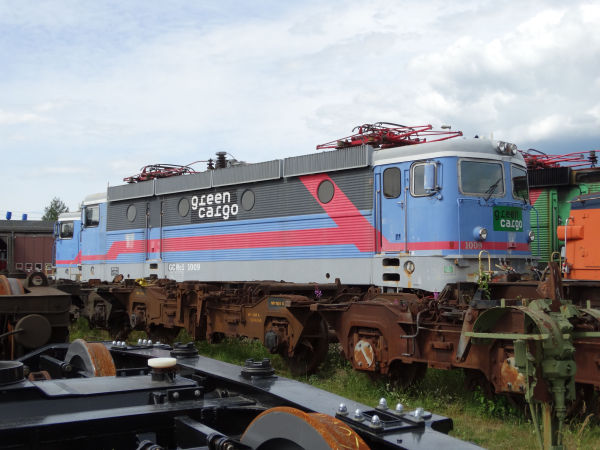
The Rc locomotive family are all very similar in their looks: Rc1, Rc2, Rc3, Rc4, Rc6, Rd2 and Rm. They are all
four axle locomotives developed by Asea, later ADtranz and built since 1967. By today's standards they are already
quite outdated and weak, but nevertheless much used in Sweden.
Rc1 is the oldest series of Asea's Rc locomotives. They were built 1967-68. Typically you wouldn't find them anywhere
any longer. This locomotive no. 1009 had been bought from Green cargo by TÅGAB and it is here seen of TÅGAB's scrapyard
where still useful parts are being dismantled from it.
Picture by the TÅGAB / Tågåkeriet i Bergslagen depot in Kristinehamn
29.6.2016 by Ilkka Siissalo.
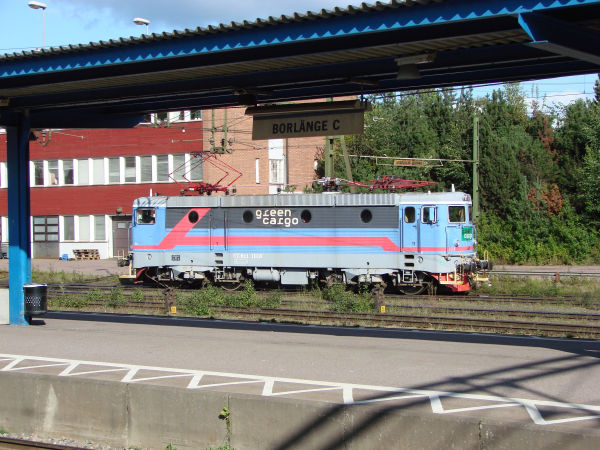
Rc1 machines have become rare in real day to day use nowadays. Here is still one in Green cargo's use in Borlänge
23.8.2009. For example TÅGAB has bought several of them from GC and still uses them in some of their cargo trains.
Photo at Borlänge central station 23.8.2009 by Ilkka Siissalo.
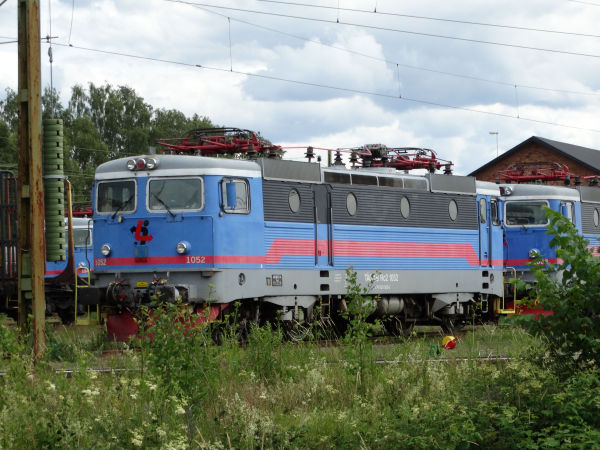
An old SJ/GC class Rc2, now bought by the private company TÅGAB, but still kept in SJ's old blue livery, here at TÅGAB's
depot in Kristinehamn 29.6.2016. Rc2 has been a common family of Rc locomotives. 100 were built in total by Asea 1969-75.
Photo by Ilkka Siissalo.
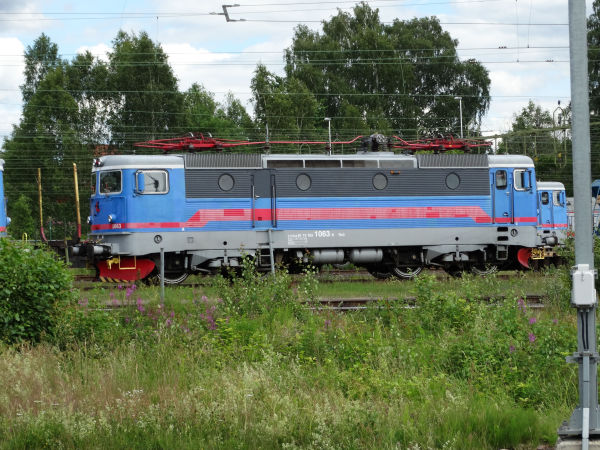
A class Rc3 looks so similar to the classes Rc1 and Rc2 that one really needs to see the text to distinguish them from
one another. Rc3 used to be a passenger train variant, with a top speed of 160 km/h. This locomotive again has been
bought by TÅGAB from SJ but has been kept in SJ's old blue colours.
Photo by Ilkka Siissalo in Kristinehamn 29.6.2016.

Another Rc3 bought from SJ by TÅGAB.
Photo by Ilkka Siissalo in Kristinehamn 30.6.2016
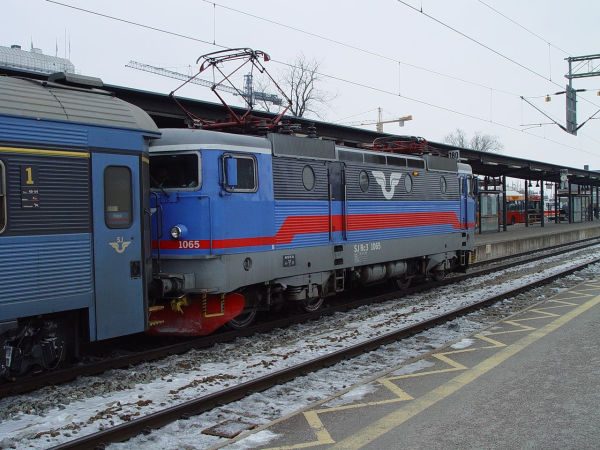
Nowadays one would not find an old Rc3 in front of an SJ express train, but in 2003 it was with some luck still
possible. Rc3 no. 1063 is arriving to Linköping 3.3.2003.
Picture by Ilkka Siissalo.
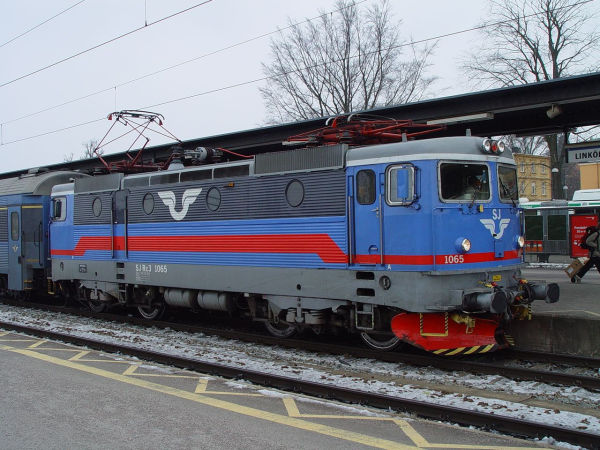
Another view of the same Rc3 in front of a passenger express service.
Picture in Linköping 3.3.2003 by Ilkka Siissalo.
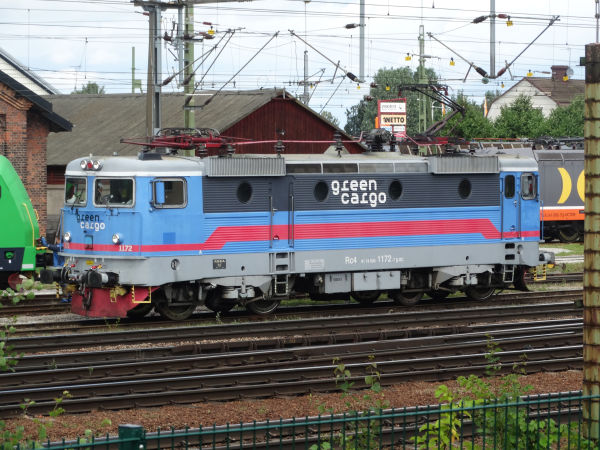
Another variant of the Rc family: an Rc4 of Green cargo at Hallsberg. These were made 1975-84 in altogether
130 copies by Asea. It is a cargo locomotive by design, with a top speed of 135 km/h.
Photo by Ilkka Siissalo in Hallsberg 12.7.2016.
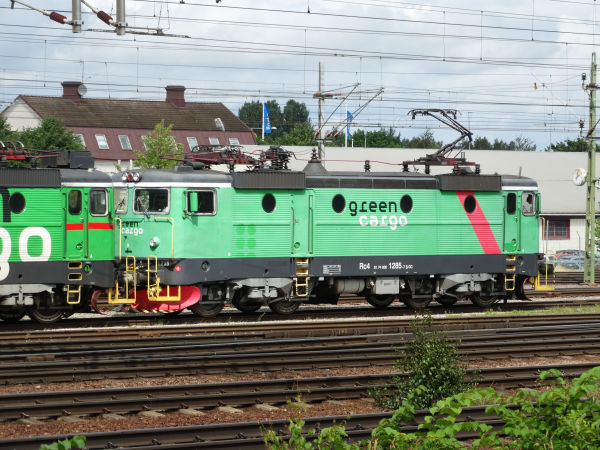
Another Rc4, this time in Green cargo's earlier green paint.
Photo by Ilkka Siissalo in Hallsberg 12.7.2016.

The same green Rc4 of Green cargo as above, but now seen in full speed and photographed from a bridge above.
Photo by Ilkka Siissalo in Hallsberg 12.7.2016.
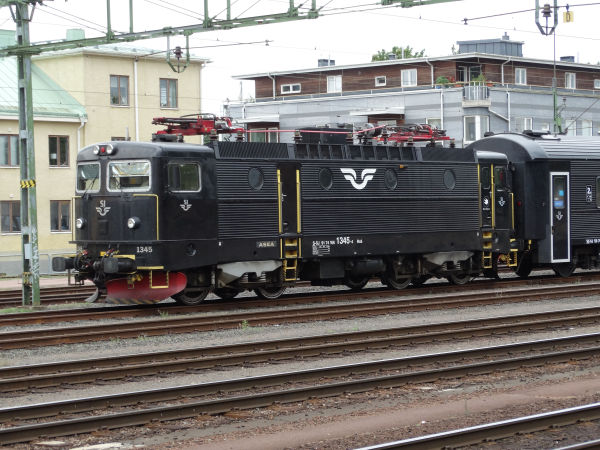
Most of Sweden's long distance express trains operated by SJ have today class Rc6 locomotives, either just in front
or two of them in "sandwich style". The Rc6 is the newest member of the Rc family, built by Asea 1985-88. Top speed is
160 km/h. Whilst most other train companies try to make their trains more visible to avoid car accidents, we have been
wondering why SJ has been progressively painting black almost all of their express train coaches as well as their
locomotives. Imagine trying to see this train approaching when it is dark and rainy !
Photo by Ilkka Siissalo in Karlstad central station 30.6.2016.
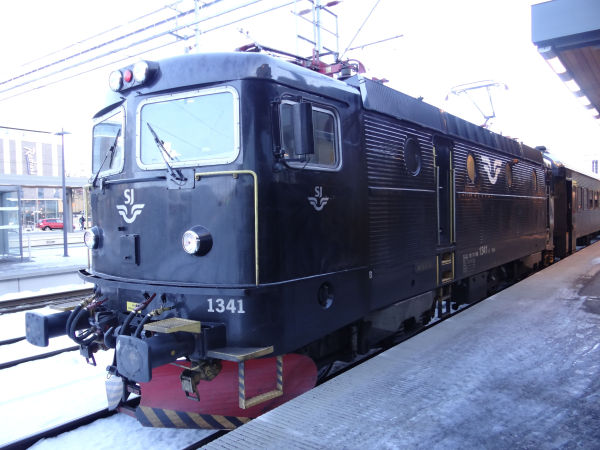
Another black Rc6, this time in Uppsala.
Photo by Ilkka Siissalo at the Uppsala central station 10.2.2015.
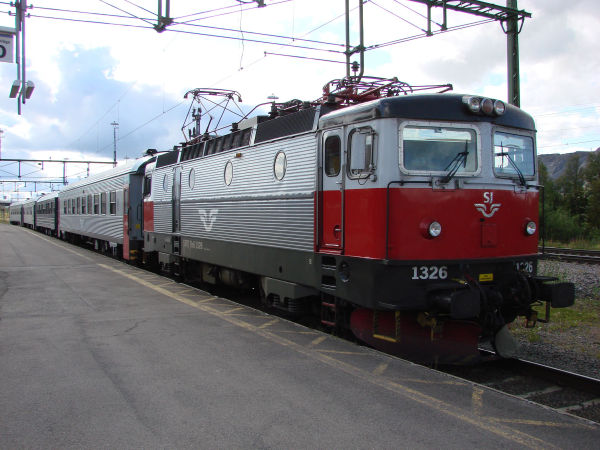
Almost all Rc6 locomotives are now black, but not quite all. Due to public tendering the international private
company Connex, later Veolia (now called Transdev) operated night trains Stockholm-Kiruna(-Narvik) for many years.
Almost all coaches as well as the Rc6 locomotives used were painted accordingly. Though after Veolia lost in yet another
tendering this service back to SJ, this locomotive and many of the coaches are still in Veolia's grey-white-red
painting. As the owner of the locomotive is marked SSRT, but you should "read that as SJ" nowadays.
Picture in Kiruna 14.8.2009 by Ilkka Siissalo.
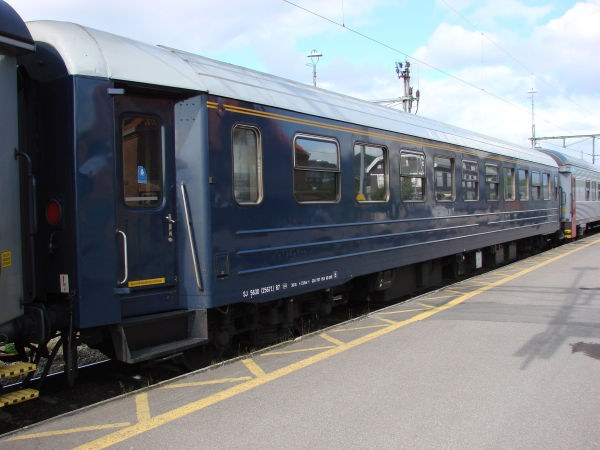
This is not a locomotive, but as a continuation of the story above: A night train coach of SJ, but in the blue and
yellow paintings of former Connex...
Picture in Kiruna 14.8.2009 by Ilkka Siissalo.
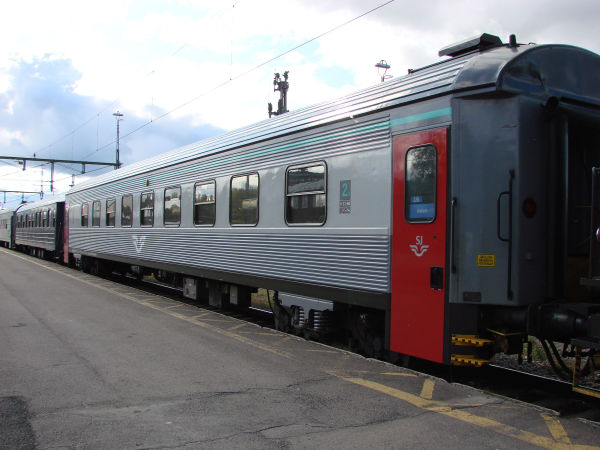
...and another SJ night train coach with big SJ logos, but in the grey-white-red paintings of Veolia.
As you may know, Connex became Veolia a long time ago and in 2018 the same company is known as Transdev.
Picture in Kiruna 14.8.2009 by Ilkka Siissalo.

THIS is why it is a very bad idea for the SJ to paint almost all of their express train locomotives and coaches
pitch black.
A nightly shot at Norrköping station 15.11.2013 by Ilkka Siissalo.

This picture is from those old days when all Swedish express trains were still blue with red stripes. An Rc6
with its express train is ready to leave Malmö station towards Stockholm.
Picture 2.3.2003 by Ilkka Siissalo.
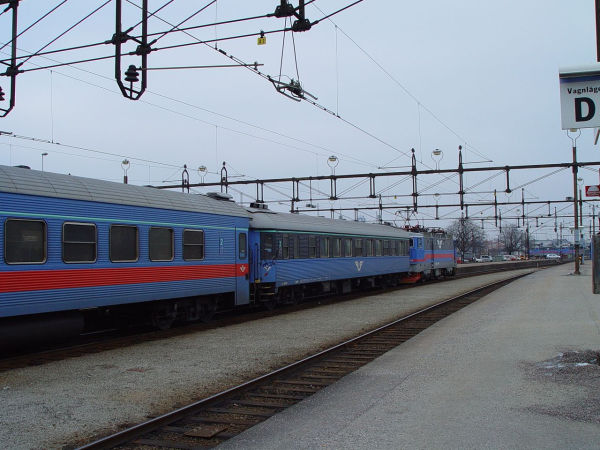
...In those days all the coaches were blue too. The coach on the right is actually quite an old one from the 1960s
and you would expect to see them today almost exclusively in private trains like e.g. Tågab. Please see the section
Sweden -> private operators to see the same coaches in today's greyish white Tågab livery.
Picture from Malmö 2.3.2003 by Ilkka Siissalo.
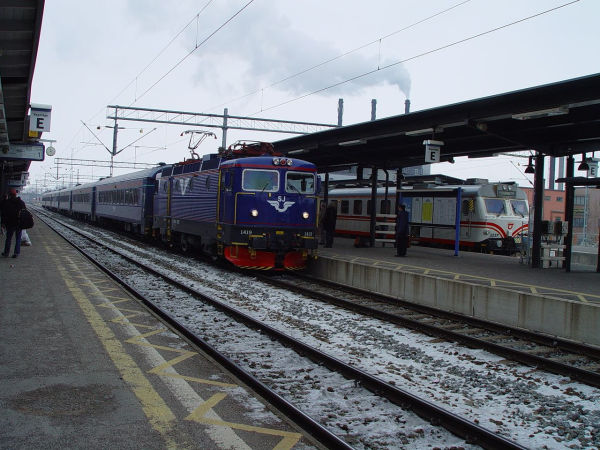
For a while SJ experimented also with painting their express trains very dark blue. Here is a dark blue Rc6 with its
matching coaches arriving to Linköping 3.3.2003.
Picture by Ilkka Siissalo.
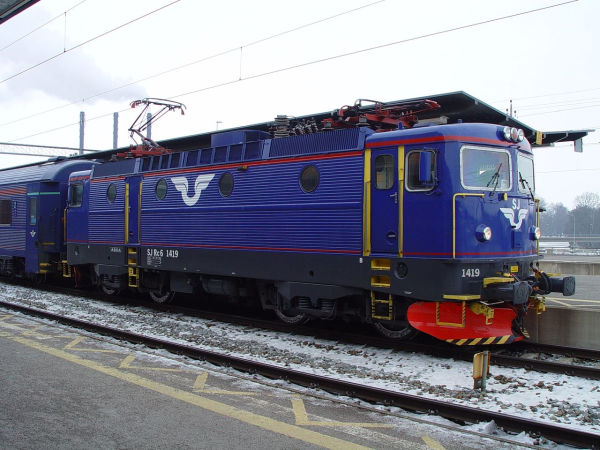
A closeup of the dark blue Rc6. In my opinion this would have been a much better alternative than the current black.
One Rc6 even got as an experiment a very dark grey painting for a while. Picture at Linköping station 3.3.2003 by Ilkka Siissalo.
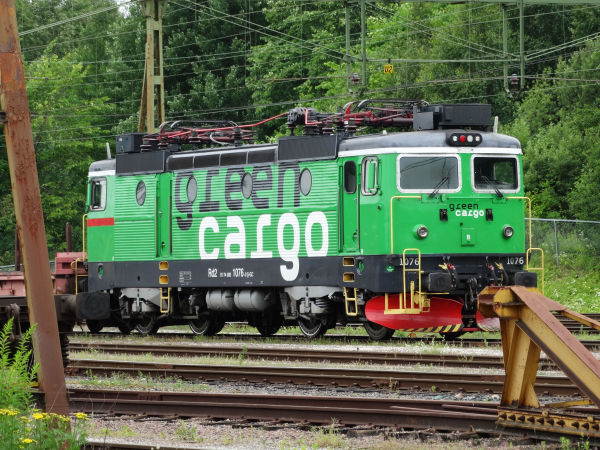
Green cargo class Rd2. The Rd2s are totally renovated Rc2 locomotives where the transformators, thyristor steering etc,
everything, has been renewed so that they essentially represent totally new locomotives. Most of GC's Rc2s have already
been converted to Rd2. Outwardly the key differences are the air conditioner "boxes" on top of the roof by the drivers'
cabs as well as the yellow railings by the corners of the locomotives. The driver can remotely control these locomotives via radio
standing on these ralings while performing shunting duties.
Photo by Ilkka Siissalo in Kristinehamn 30.6.2016.
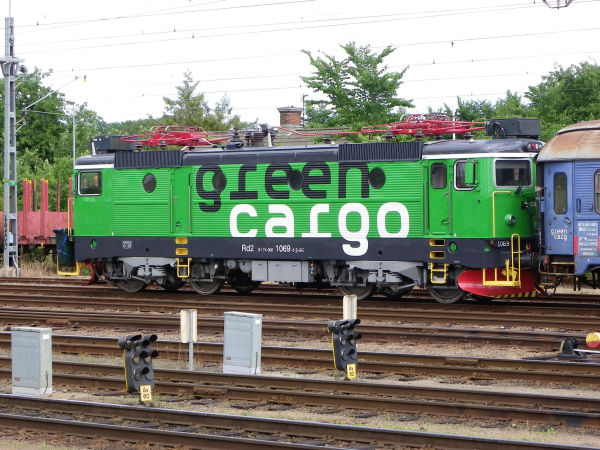
Another Rd2, here still during its testing phase right after the thorough rebuilding. This was one of the very first Rc2
locomotives to be rebuilt to become Rd2.
Picture in Alvesta 30.6.2010 by Ilkka Siissalo.

An Rd2 of Green cargo is just hauling a heavy cargo train, presumably full of paper rolls, through platform 1 of
Sundsvall central station. In the background train photographer Sanna Siissalo and our train spotter terrier Mei.
Picture in Sundsvall 14.7.2016 by Ilkka Siissalo.
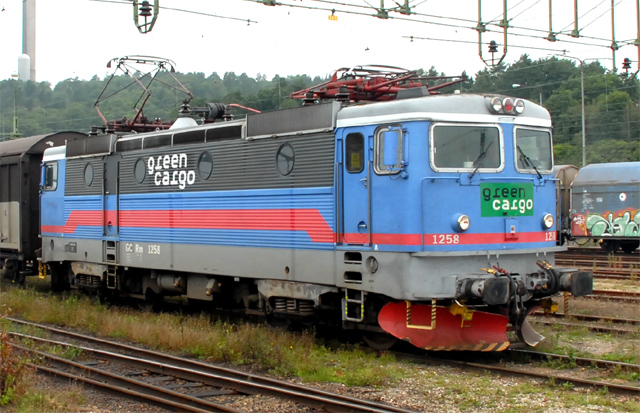
The class Rm was actually an Rc locomotive, but with its gearbox changed to a lower top speed (100km/h) and with a heavy load of concrete
added to increase its weight in order to reduce skidding. They were built for hauling iron ore trains over the Malmbanan route from Kiruna
to Narvik in Norway, but they were never a success. Most of them were used just like any normal Rc locomotives in southern Sweden. When the
new "Tapuli" iron ore mine was opened in Pajala, a strange set of transportation emerged. Tens of huge lorries drove iron ore from the Tapuli
mine near Pajala all the way to Svappavaara day and night, weekdays as well as Sundays, tens of kilometres along very poor roads and often
awful road conditions. In Svappavaara the ore was loaded onto trains, which then once again were hauled with these old
class Rm locomotives over the mountains to Norway and the port of Narvik. But after the mining company went bankrupt - no wonder because of
the huge transportation costs - the Rm locomotives were returned to regular cargo traffic. While in iron ore service they had SA3 central
couplings, but they have lost them again now. SJ / Green cargo only ever had six of these locomotives.
Picture of an Rm locomotive from Uddevalla 26.7.2007 by Jan Oosterhuis. Published as-is under the
Creative Commons CC-BY-SA 3.0 license.
Other electric locomotives of SJ and GC
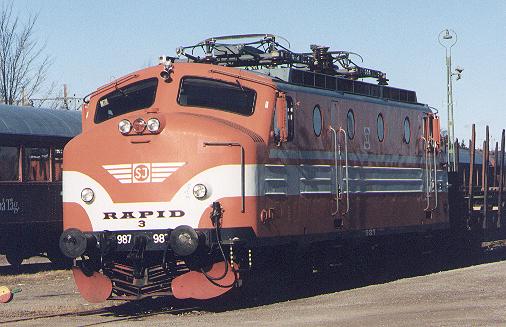
A very early electric locomotive type in Sweden was the class Ra, built by Asea 1955-61. One example is
left at the Swedish railway museum in Gävle. Here Ra 987 is at the Swedish Railway Museum at Gävle, March 1997.
Photo by Urban Fredriksson. Uploaded Jun 18, 1997.
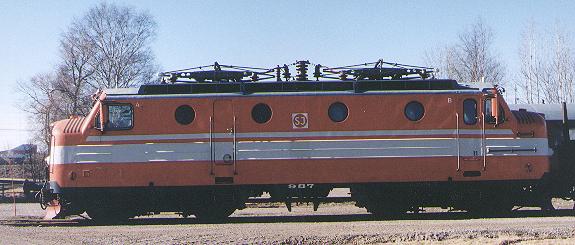
Another view of the Ra no.987 at the Swedish Railway Museum at Gävle, March 1997.
Photo by Urban Fredriksson. Uploaded Jun 18, 1997.
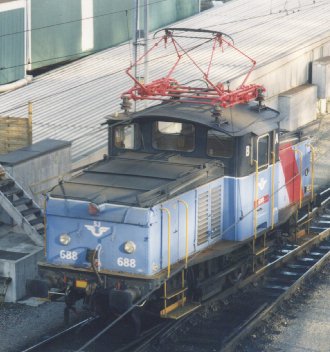
Switcher of class Ue no.688 at Stockholm Central Station, October 1995.
Photo by Urban Fredriksson. Uploaded Jun 18, 1997.

